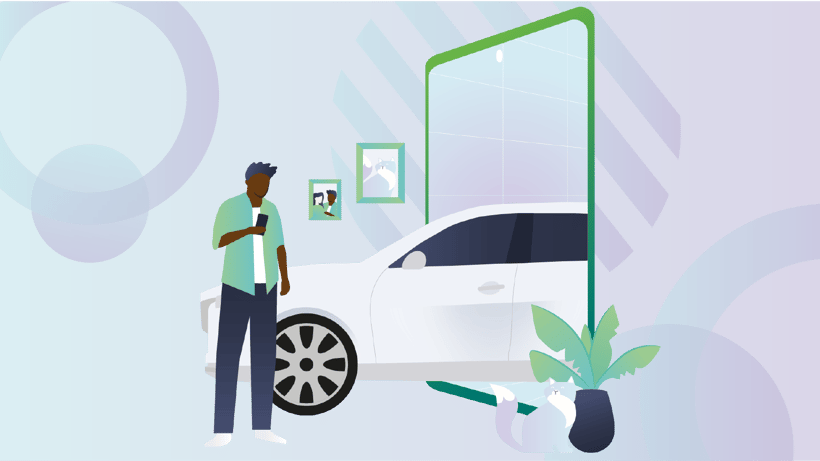In the world of retail, change is the only constant. Over the years, the retail landscape in the European Union's four major economies (Germany, France, Italy, and Spain) has exhibited both similarities and differences when compared to the United Kingdom. The transformative impact of COVID-19 has only accelerated these shifts, making it imperative for lenders and retailers to adapt to new consumer behaviours and market dynamics.
The UK vs. EU4 Retail Landscape
One striking difference between the UK and EU4 lies in the automotive retail sector. In the UK, there are notably fewer franchised retail points compared to many European markets. Moreover, a substantial percentage of UK dealerships fall under the ownership of a single entity, including publicly listed companies.
Over the last 15 years, the UK has witnessed significant consolidation in the retail landscape. This consolidation has led to improved operational efficiencies and enhanced profitability for Original Equipment Manufacturers (OEMs) and their franchised dealers. The trend of consolidation continues to this day, with overseas investors eyeing major dealer groups like Pendragon Plc and Jardine Motors Group.
In contrast, the EU4 nations have been following a similar consolidation model in recent years, albeit at varying paces. The overall number of franchised new car dealerships in Europe has been on the decline. To illustrate, Germany boasts over 17,800 main franchised dealers, representing 33% of Europe's total, while France has more than 21,600 sales points. In stark contrast, the UK has a mere 6,400 dealerships, primarily due to its more efficient distribution network.
The Impact of COVID-19 and the Digital Revolution
The COVID-19 pandemic triggered a seismic shift in consumer behaviour across Europe, especially in the EU4 and the UK. Online-only used car vendors, such as Cazoo, Cinch, Auto Hero, Brumbrum, and Driverama, emerged during the pandemic and quickly gained prominence. Their success was driven by extensive marketing efforts and the shift to online shopping during lockdowns.
However, post-pandemic, many of these companies faced commercial challenges, including difficulties in sourcing used car stock and broader economic uncertainties. Moreover, consumers are returning to pre-pandemic lifestyles, with a preference for conducting pre-purchase research online and finalising deals in person.
The Retail Landscape Post-COVID: UK vs. EU4
As COVID-19 recedes, consumers in the UK and EU4 are embracing in-person interactions and flocking back to traditional retail outlets. People seek the tangible and emotional aspects of shopping, crucial for high-ticket items like cars.
Digital plays a pivotal role in reaching the tangible and emotional stages of the buying process. Thus, an immersive digital customer experience is essential, with digital platforms handling research, finance, insurance, eligibility checks, reservations, and applications. In essence, digital does the heavy lifting, while the in-person experience delivers the emotional, tangible aspects that seal the deal.
In conclusion, the automotive retail landscape is rapidly evolving in both the UK and EU4. The pandemic accelerated the shift to digital, emphasising the importance of a seamless online-to-offline buying journey. Adaptation to changing consumer behaviour, compliance with regulations, and navigating economic uncertainty are key challenges facing lenders and retailers across Europe.
Top Three Challenges:
- Changing Consumer Behaviour: Understand and adapt to the evolving consumer journey, which increasingly involves digital channels for research and comparison before in-person engagement.
- Regulatory Compliance: Stay updated on changing regulations, such as GDPR in the EU and new regulations like the UK's Consumer Duty. Compliance is essential to avoid legal and financial consequences.
- Economic Uncertainty: Monitor economic factors and be prepared for fluctuations that can impact consumer confidence and purchasing decisions.
Tips for Future-Proofing:
- Embrace Innovation and Collaboration: Collaborate on customer-centric initiatives, leverage new technologies, and adopt bold strategies to meet evolving consumer demands.
- Provide Choice, Clarity, and Comparison: Offer customers options, transparency, and the ability to compare products and services. Let the customer decide based on their preferences and needs.
- Think Like a Customer: Focus on the customer's needs and preferences. Provide a seamless digital experience for research and information gathering while maintaining an engaging in-person buying experience. Make buying easier by emphasising a customer-first approach.
In a world where retail is continuously transformed by technology and consumer behaviour, lenders and retailers must innovate and adapt to remain competitive and relevant. The future belongs to those who can seamlessly blend the digital and physical aspects of the customer journey while prioritising customer satisfaction and convenience.

.gif?width=900&height=129&name=Enterprise%20Banner%20(900%20x%20129).gif)
